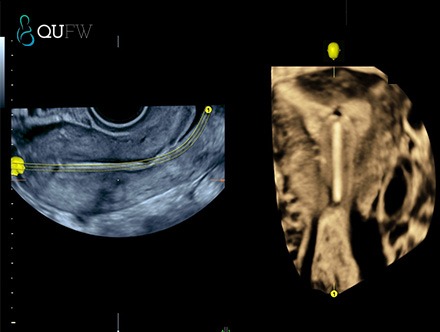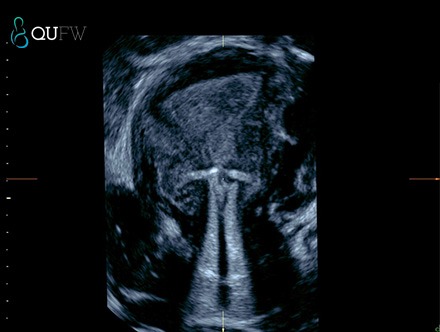At QUFW, an Intrauterine Device (IUD) assessment is a routine part of a gynaecological ultrasound examination. It is performed to evaluate the position and condition of an IUD. An IUD is contraceptive device inserted in the endometrial cavity.
The ultrasound is performed transabdominally (with the ultrasound probe on the outside of the abdomen) and transvaginally (with the ultrasound probe inserted into the vagina).
The main objectives of an IUD assessment are as follows:
Position of the IUD: The assessment verifies that the IUD is in the correct position within the uterus. An incorrectly positioned IUD may malfunction, resulting in its reduced effectiveness as a contraceptive measure and/or discomfort or other complications.
Presence of the IUD: IUDs have been known to leave the body without the woman noticing. An IUD assessment ultrasound can confirm whether the IUD is still present in the uterus.
Complications: An IUD assessment ultrasound may be able to identify potential complications related to the IUD or its placement. This includes, but is not limited to, complications such as:
- Embedding into the uterine wall
- Perforation (where the IUD punctures the wall of the uterus)
- Infection.
Strings: Although not always visible on ultrasound, if they are seen, this can provide reassurance that the IUD is in place.
IUD assessments are generally performed when a woman has symptoms that suggest a potential issue with her IUD (like pelvic pain or abnormal bleeding), or when a healthcare provider is unable to locate the strings of the IUD during a physical examination.
Preparation
It is recommended to empty your bladder 1 hour prior to the procedure and drink 2 glasses of water and then do not empty.


